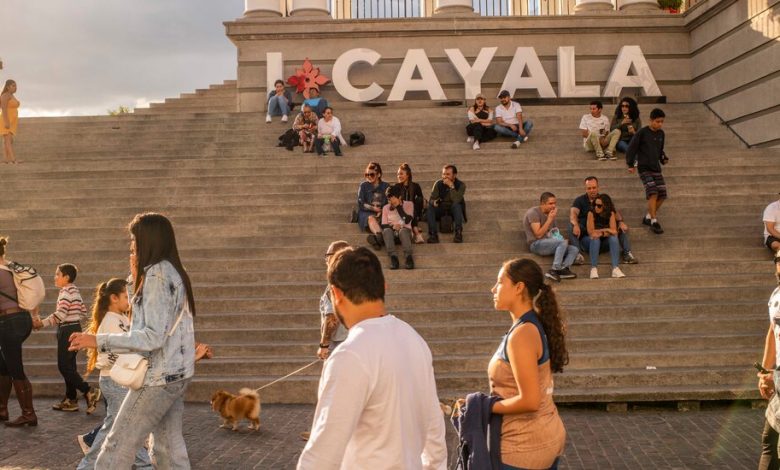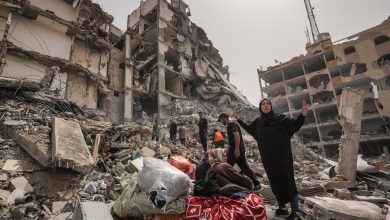New Utopian Enclave? Or a Testament to Inequality?

Try going for a stroll in much of Guatemala City: It is a pedestrian’s nightmare.
Motorcycles speed down crowded sidewalks. Rifle-grasping guards squint at each passerby, sizing up potential assailants. Smoke-belching buses barrel through stop signs.
But tucked within the chaotic capital’s crazy-quilt sprawl, there is a dreamlike haven where none of that exists.
In the City of Cayalá, a utopian domain created by one of Guatemala’s richest families, the streets are quiet and orderly, the stores are upscale and the homes attainable — if only to families from the country’s small, moneyed elite, or foreigners, like the American diplomats stationed at the huge newly built United States embassy nearby.
Evoking the feel of a serene Mediterranean town, Cayalá features milky white buildings with red-tile roofs, a colossal civic hall with Tuscan columns, cafes and high-priced restaurants, colonnade-lined plazas and walkable, stone-paved boulevards. All of this is open to the public — except for the gated sections where about 2,000 families live.
“In 20 years, Cayalá will be just like La Rambla,” said Andrés García Manzo, a restaurateur who lives in one of Cayalá’s secluded villas, drawing a comparison to Barcelona’s legendary pedestrian-friendly promenade. “You can walk everywhere here in peace.”
But critics say it is largely a playground for the well-off, hard to reach by public transit, environmentally devastating and has attracted significant investment even as other parts of crime-ridden Guatemala City fall into decay.

A common space in Cayalá. Homes here are affordable only to families from the country’s small, moneyed elite, or foreigners.
Cayalá began taking shape more than a decade ago and has won multiple international awards for what urban designers view as the openness of its innovative shared spaces.
But a fierce debate is flaring about whether Cayalá aggravates problems of inequality and access to urban spaces, instead of alleviating them, after protesters against the efforts to thwart the country’s new president, Bernardo Arévalo, from taking office were barred by gunmen from the area.
The spotlight on Cayalá — which roughly translates as “paradise” in the Indigenous Kaqchikel language — casts attention on the role of architecture and urban design in one of Latin America’s most unequal countries, where an estimated 59 percent of the population of 18 million subsists below the poverty line.
Cayalá started out on a modest scale 20 years ago when Guatemala’s Leal family, which owns large swaths of some of the capital’s last urban forests and had already built fenced-off neighborhoods, hatched plans for a different kind of community.
They hired a Luxembourg-born architect Léon Krier, who had worked with King Charles III on a model town in southern England, to help plan Cayalá. Architects including the University of Notre Dame’s Richard Economakis also signed on, drawing inspiration from the Parthenon of Athens to design Cayalá’s civic hall.
Private security guards closely monitor the grounds, especially on weekends when shoppers flock to the area. The neighborhood has proved especially popular with visitors from neighboring El Salvador.
In a city where the upper classes have long lived in well-guarded communities, Cayalá might not have become the focus of an uproar if not for the protests that exploded in October around Guatemala over the ultimately unsuccessful attempts to prevent Mr. Arévalo from taking office.
While protests elsewhere in the country unfolded largely peacefully, two motorists forced their vehicles through the demonstrators near Cayalá’s entrance and gun-wielding men in ski masks, including an owner of a business in Cayalá, barred the protesters from entering the area.
The episode left many aghast.
“I was stunned when I saw those images,” said Dora Monroy, who lives in a neighborhood next to Cayalá. “When someone takes a rifle to a peaceful protest, it’s a form of intimidation.”
Cayalá’s developers declined to comment on that episode, and did not respond to questions about criticism of the enclave. But in a statement, a spokesman said, “Cayalá is a city for everyone.”
As they nurture plans to expand, some question how that could effect some of Guatemala City’s last remaining forests.
Bárbara Escobar, a biologist and conservationist, said the expansion could inflict damage on a basin crucial for recharging groundwater, while endangering a habitat for foxes, raccoons and owls.
“I’m not against development, but one has to do things right,” she said. Noting that bus access to Cayalá is limited, largely making it a place for people prosperous enough to own cars, Ms. Escobar added, “This is a zone of exclusion, designed for a privileged minority in this country.”
In a twist, dissension is also coming from Mr. Krier, one of Cayalá’s creators. Mr. Krier, who has worked on Cayalá since 2003, acknowledged that it was conceived as a place for upper-class Guatemalans to live.
“You have lots of things for the extreme rich,” he said. “We built for the medium and wealthy rich.”
But Mr. Krier also emphasized that he envisioned Cayalá as a completely non-gated development with two- to three-story buildings, inspired by Persian, Greek and Roman cities of antiquity, where people from all walks of life could gather.
“The city should be walkable, not only horizontally but vertically,” he explained, adding that tall buildings make cities too dense, raise energy costs because of the need for elevators and prioritize real estate speculation over quality of life.
A departure from that vision came, Mr. Krier said, when “the residents got together and democratically voted for gating,” effectively creating an array of closed communities within a development that otherwise remains open.
A plan by Cayalá’s developers to build high-rises as they expand, which could generate higher returns from a commercial perspective, was a step too far for Mr. Krier, who recently resigned in response.
“The pressure on me as master planner became unbearable,” he said. “Skyscraping is, I think, an immoral act.”
Criticism of Cayalá has been building for years, with some questioning the project when urban areas that are potential gems, like Guatemala City’s old center, are in disrepair.
Javier Lainfiesta Rosales, the founder of a venture providing marketing for startups, called Cayalá an “abomination” in an essay.
“In Cayalá, there are no homeless people, begging children, malnutrition, street vendors, harassment, collisions, extortion, assaults, corruption, or inequality,” he said. “It’s a piece of the First World in the heart of a city dangerously close to being Fourth World.”
Still, Cayalá has many defenders, who point out that people from different backgrounds frequent its open spaces.
Warren Orbaugh, an architecture professor at Francisco Marroquín University, hit back at the focus on the thousands of trees felled to build and expand Cayalá.
“What wasn’t once forest here in Guatemala?” Mr. Orbaugh asked. “Cayalá should multiply like cells around the country, replicated in terms of its scale and population density.”
Cayalá’s allure was on display this month, when visitors, including Indigenous families chatting in Mayan languages, roamed its grounds, taking selfies in front of pieces of sculpture. Young couples intertwined on park benches whispered sweet-nothings to one another.
Other visitors wandered into Cayalá’s cavernous Roman Catholic church. Oenophiles sipped wine at cafes, and partyers at an overflowing Mexican restaurant drank margaritas.
Just steps away, behind Cayalá’s gates, its well-guarded residential areas, perched near a nature reserve, were eerily quiet.
Mr. García Manzo, the restaurateur who lives in Cayalá, said the three restaurants he owns there provide jobs for more than 100 people.
But he acknowledged that fears emerged among his neighbors during the protests when rumors spread that hundreds of buses were headed toward Cayalá to attack the area.
“I told my neighbors that was impossible, if they come they won’t be carrying torches to light our houses on fire,” said Mr. García Manzo, emphasizing that he was against taking up arms to protect Cayalá. “The rumors created a strong psychosis.”
For Carlos Mendizábal, an architect who loathes Cayalá, that wasn’t surprising. Citing the need to constantly repaint its white walls and repair its air conditioning, all while bolstering security, he called it an unsustainable “white elephant.”
“After all this time,” Mr. Mendizábal said, “Cayalá is still a shopping center pretending to be a neighborhood.”



